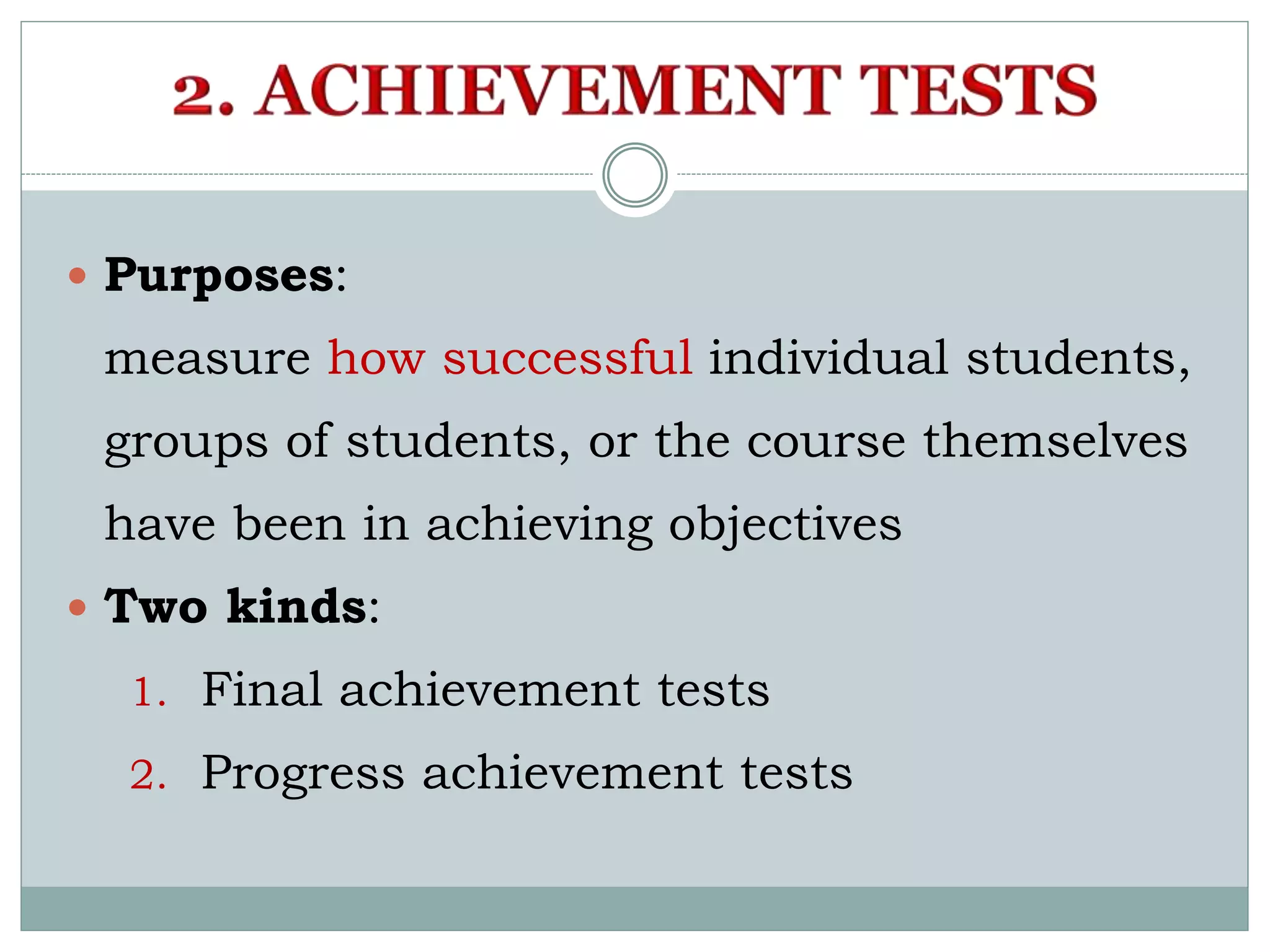This document summarizes four types of language tests: proficiency tests, achievement tests, diagnostic tests, and placement tests. It provides details about each type of test, including their purposes, content, advantages, and disadvantages. Proficiency tests measure overall language ability regardless of training, while achievement tests measure success in achieving course objectives. Diagnostic tests identify strengths and weaknesses, and placement tests are used to assign students to appropriate class levels. The document also discusses additional topics in language testing such as direct vs indirect testing, and objective vs subjective scoring.
































